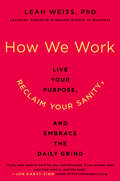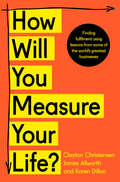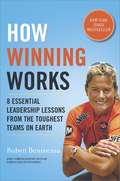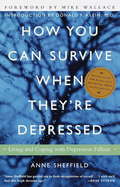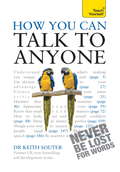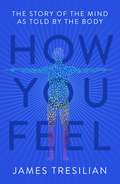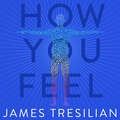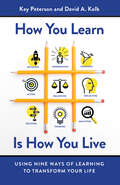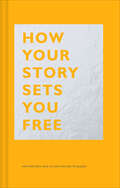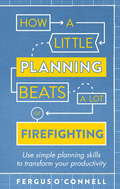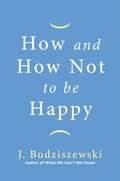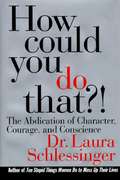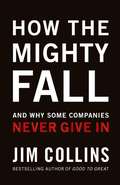- Table View
- List View
How We Work: Live Your Purpose, Reclaim Your Sanity, and Embrace the Daily Grind
by Leah WeissA practical guide to bringing our whole selves to our professional work, based on the author’s overwhelmingly popular course at the Stanford Graduate School of Business.In today’s workplace, the traditional boundaries between "work" and "personal" are neither realistic nor relevant. From millennials seeking employment in the sharing economy to Gen Xers telecommuting to Baby Boomers creating a meaningful second act, the line that separates who we are from the work we do is blurrier than ever.The truth is, we don’t show up for our jobs as a portion of ourselves—by necessity, we bring both our hearts and our minds to everything we do. In Take This Job And Love It, mindfulness expert and creator of the perennially-waitlisted Stanford Business School course "Leading with Mindfulness and Compassion" Dr. Leah Weiss explains why this false dichotomy can be destructive to both our mental health and our professional success.The bad news, says Weiss, is that nothing provides more opportunities for negative emotions—anxiety, anger, envy, fear, and paranoia, to name a few—than the dynamics of the workplace. But the good news is that these feelings matter. How we feel at and about work matters—to ourselves, to the quality of our work, and ultimately to the success of the organizations for which we work.The path to productivity and success, says Weiss, is not to change jobs, to compartmentalize our feelings, or to create a false "professional" identity—but rather to listen to the wisdom our feelings offer. Using mindfulness techniques, we can learn how to attend to difficult feelings without becoming subsumed by them; we can develop an awareness of our bigger picture goals that orients us and allows us to see purpose in even the most menial tasks. In Take This Job And Love It, Weiss offers a set of practical, evidence-based strategies for practicing mindfulness in the real world, showing readers not just how to survive another day, but how to use ancient wisdom traditions to sharpen their abilities, enhance their leadership and interpersonal skills, and improve their satisfaction.
How Will You Measure Your Life? (Harvard Business Review Classics)
by Clayton M. ChristensenIn the spring of 2010, Harvard Business School’s graduating class asked HBS professor Clay Christensen to address them-but not on how to apply his principles and thinking to their post-HBS careers. The students wanted to know how to apply his wisdom to their personal lives. He shared with them a set of guidelines that have helped him find meaning in his own life, which led to this now-classic article. Although Christensen’s thinking is rooted in his deep religious faith, these are strategies anyone can use.Since 1922, Harvard Business Review has been a leading source of breakthrough ideas in management practice. The Harvard Business Review Classics series now offers you the opportunity to make these seminal pieces a part of your permanent management library. Each highly readable volume contains a groundbreaking idea that continues to shape best practices and inspire countless managers around the world.
How Winning Works
by Robyn BenincasaRobyn Benincasa has made an art form of extreme performance by competing and winning at the highest levels of sport and business. In her fifteen-year career as a professional adventure racer, she has biked through jungles in Borneo, climbed Himalayan giants in Nepal, trekked across lava fields in Fiji, rafted rapids in Chile-and racked up multiple world championship titles along the way. In her spare time, she is a firefighter and a sought-after keynote speaker on the subject of teamwork and leadership.In How Winning Works, Benincasa shows you how to climb to new levels of professional and personal success. She shares the eight essential elements of teamwork, learned through her extreme adventure racing, that create synergy with all the teammates in your life, from colleagues and customers to family members and friends:Total Commitment Empathy and AwarenessAdversity ManagementMutual Respect"We" ThinkingOwnership of the ProjectRelinquishment of EgoKinetic LeadershipThis field guide to success shares the same training tools and exercises that have become wildly popular in the leadership seminars Benincasa gives to corporations, including Starbucks, Deloitte Consulting, 3M, Verizon, Nestlé, Boeing and many others. Stories from her adventure racing also illustrate how winning teams interact under the world's most extreme conditions, from jungles to mountain peaks.Whether you're trying to beat the competition to market with a new product, scale a looming mountain of deadlines or simply get your kids to clean up their rooms, the advice in this book will take you on an adventure you'll never forget, and coach you over the finish line to success.
How Women Rise: Break the 12 Habits Holding You Back from Your Next Raise, Promotion, or Job
by Marshall Goldsmith Sally HelgesenReady to take the next step in your career . . . but not sure what's holding you back? Read on. Leadership expert Sally Helgesen and bestselling leadership coach Marshall Goldsmith have trained thousands of high achievers--men and women--to reach even greater heights. Again and again, they see that women face specific and different roadblocks from men as they advance in the workplace. In fact, the very habits that helped women early in their careers can hinder them as they move up. Simply put, what got you here won't get you there . . . and you might not even realize your blind spots until it's too late. Are you great with the details? To rise, you need to do less and delegate more. Are you a team player? To advance, you need to take credit as easily as you share it. Are you a star networker? Leaders know a network is no good unless you know how to use it. Sally and Marshall identify the 12 habits that hold women back as they seek to advance, showing them why what worked for them in the past might actually be sabotaging their future success. Building on Marshall's classic best seller What Got You Here Won't Get You There, their new book How Women Rise is essential reading for any woman who is ready to advance to the next level.
How Work Works: The Subtle Science of Getting Ahead Without Losing Yourself
by Michelle P. KingA unique and revelatory guide to understanding and navigating the unwritten rules of the workplace—the key to achieving success, finding meaning, and staying true to your authentic self in today’s business world—from the organizational expert and celebrated author of The Fix.In her two decades researching organizations, Michelle King has discovered that people who succeed possess a particularly unique skill: They know how workplaces work. More specifically, to get ahead, they do not rely on the often generic and outdated written formal rules that for a century have defined the workplace. Instead, they have learned to gauge how they should behave and perform by becoming aware of informal (and unspoken) rules that exist just below the surface, rather than “formal” organizational guidelines. In this one-of-a-kind guide, King offers her proprietary framework based on over ten years of research and hundreds of employees who reached leadership positions. By focusing on five key areas -- navigating informal networks; developing self-awareness and awareness of others; learning the skills you need to be adaptive to changing conditions; getting support for your next promotion; and finding meaning and fulfillment at work—King teaches every professional how to understand and make these systems work for them and achieve their career ambitions.The new world of work requires a new way of working. With more people vying for top positions, a volatile unpredictable global workplace, and an ever-evolving landscape, it is increasingly important for employees to understand how to negotiate the unspoken and intangible elements of workplace culture.. In How Work Works, King dispels old myths and provides keen observations about what it means to find belonging, build networks, manage the informal and ultimately thrive at work.
How You Can Survive When They're Depressed
by Mike Wallace Anne SheffieldEach year more than 17 million Americans suffer from a depressive illness, yet few suffer in solitude. How You Can Survive When They're Depressed explores depression from the perspective of those who are closest to the sufferers of this prevalent disorder--spouses, parents, children, and lovers--and gives the successful coping strategies of many people who live with a clinical depressive or manic-depressive and often suffer in silence, believing their own problems have no claim to attention.Depression fallout is the emotional toll on the depressive's family and close friends who are unaware of their own stressful reactions and needs. Sheffield outlines the five stages of depression fallout: confusion, self-doubt, demoralization, anger, and finally, the desire to escape. Many people will find relief in the knowledge that their self-blame, guilt, sadness, and resentment are a natural result of living with a depressed person. Sheffield brings together many real-life examples from the pioneering support group she attends at Beth Israel Medical Center of how people with depression fallout have learned to cope. From setting boundaries to maintaining an outside social life, she gives practical tactics for handling the challenges and emotional stresses on a day-to-day basis.
How You Can Survive When They're Depressed
by Mike Wallace Anne SheffieldEach year more than 17 million Americans suffer from a depressive illness, yet few suffer in solitude. How You Can Survive When They're Depressed explores depression from the perspective of those who are closest to the sufferers of this prevalent disorder--spouses, parents, children, and lovers--and gives the successful coping strategies of many people who live with a clinical depressive or manic-depressive and often suffer in silence, believing their own problems have no claim to attention.Depression fallout is the emotional toll on the depressive's family and close friends who are unaware of their own stressful reactions and needs. Sheffield outlines the five stages of depression fallout: confusion, self-doubt, demoralization, anger, and finally, the desire to escape. Many people will find relief in the knowledge that their self-blame, guilt, sadness, and resentment are a natural result of living with a depressed person. Sheffield brings together many real-life examples from the pioneering support group she attends at Beth Israel Medical Center of how people with depression fallout have learned to cope. From setting boundaries to maintaining an outside social life, she gives practical tactics for handling the challenges and emotional stresses on a day-to-day basis.
How You Can Talk To Anyone: Teach Yourself
by Keith Souter""How You Can Talk To Anyone"" will change the life of any reader who finds themselves scared and shy in social situations - and it will have a pretty amazing effect on those who just need a bit of a confidence boost!
How You Feel: The Story of the Mind as Told by the Body
by James TresilianClose your eyes and ask yourself, 'what do I feel?'You might feel thirsty or tired. You might feel healthy and well or perhaps a little under the weather. Maybe you can feel that you are standing or that you are leaning over. You may also feel the world around you - the shape and texture of an apple in your hand, the feel of a chair you're sitting on.All these feelings have something in common, say psychologists and neuroscientists. They are all mental events, things that happen in the mind. But what if this is all wrong?What if it's not just the mind, but also the body itself that feels? And not merely physical sensations, but other feelings that seem to have nothing to do with bodies. Things like 'emotions' and 'intuitions' - joy or rage, anxiety or optimism, or the feeling of being hard done by or misunderstood?Drawing on the latest research and a range of classic and contemporary thought, How You Feel shows you that your brain and your body are two parts of a single system that creates your mind and mental life. You will discover that you don't have feelings, thoughts and emotions inside your body, you have them with your body. There can be no mind without the body.Psychology is no longer about the brain, or about 'mind and body', it is about the whole that is you.
How You Feel: The Story of the Mind as Told by the Body
by James TresilianClose your eyes and ask yourself, ''what do I feel?''You might feel thirsty or tired. You might feel healthy and well or perhaps a little under the weather. Maybe you can feel that you are standing or that you are leaning over. You may also feel the world around you - the shape and texture of an apple in your hand, the feel of a chair you''re sitting on.All these feelings have something in common, say psychologists and neuroscientists. They are all mental events, things that happen in the mind. But what if this is all wrong?What if it''s not just the mind, but also the body itself that feels? And not merely physical sensations, but other feelings that seem to have nothing to do with bodies. Things like ''emotions'' and ''intuitions'' - joy or rage, anxiety or optimism, or the feeling of being hard done by or misunderstood?Drawing on the latest research and a range of classic and contemporary thought, How You Feel shows you that your brain and your body are two parts of a single system that creates your mind and mental life. You will discover that you don''t have feelings, thoughts and emotions inside your body, you have them with your body. There can be no mind without the body.Psychology is no longer about the brain, or about ''mind and body'', it is about the whole that is you.
How You Feel: The Story of the Mind as Told by the Body
by James TresilianClose your eyes and ask yourself, 'what do I feel?'You might feel thirsty or tired. You might feel healthy and well or perhaps a little under the weather. Maybe you can feel that you are standing or that you are leaning over. You may also feel the world around you - the shape and texture of an apple in your hand, the feel of a chair you're sitting on.All these feelings have something in common, say psychologists and neuroscientists. They are all mental events, things that happen in the mind. But what if this is all wrong?What if it's not just the mind, but also the body itself that feels? And not merely physical sensations, but other feelings that seem to have nothing to do with bodies. Things like 'emotions' and 'intuitions' - joy or rage, anxiety or optimism, or the feeling of being hard done by or misunderstood?Drawing on the latest research and a range of classic and contemporary thought, How You Feel shows you that your brain and your body are two parts of a single system that creates your mind and mental life. You will discover that you don't have feelings, thoughts and emotions inside your body, you have them with your body. There can be no mind without the body.Psychology is no longer about the brain, or about 'mind and body', it is about the whole that is you.
How You Learn Is How You Live: Using Nine Ways of Learning to Transform Your Life
by David A. Kolb Kay PetersonWhat's Your Learning Style?Being a lifelong learner is one of the secrets to happiness, success, and personal fulfillment. But what's the best way to become one? Kay Peterson and David Kolb have the answer. They offer deep, research-based insights into the ideal process of learning and guide you in identifying your dominant style. You'll discover how knowing your learning style can help you with all kinds of everyday challenges, from remembering someone's name to adding a crucial professional skill to your repertoire. This book is a guide to awakening the power of learning that lies within each of us.
How Young Are You?: Understanding Psychological Age, Time, Causometry, to Create Meaningful, Harmonious, Productive Lives
by A. A Kronik“His work is truly revolutionary. He has taken the most important of existential experiences and made them transparent for self-growth and research.” —Linda Berg-Cross, PhD, ABPP, Professor of Psychology, Howard UniversityThe main purpose of this research-based, self-help book is to introduce the goal-and-causal theory of “Psychological Time,” and to help you calculate your “Psychological Age”—that is, how old you feel, based on significant events in your life. You can also learn how to lower your psychological age (feel younger), using past experiences to move into the future, rejuvenating the mind for more satisfying personal growth, productivity, and happiness. We humans created the convention of Time—hours, days, millennia. But we also created “Psychological Time,” which we can compress (to survive an interminable wait, for example), or expand (to luxuriate in pleasure). So fully-integrated into our brain is this “Psychological Time” that, as part of the illusion, we can lose touch with “real” chronological time altogether, and even change the sequence of past events to contradict or override our otherwise communal understanding of the world. In this book, you will generate “Causograms,” a kind of map that graphically represents your perception of the cause-and-effect and goal-based connections that your mind naturally makes between life experiences. These include, but are not limited to achievements, memories triggered by new experiences, and expectations based on prior accomplishments. This process allows you to re-examine the relation between life events, goals and personal interactions, then compare your resulting “Psychological Age” to your chronological age. “What a wonderful approach to the human life cycle. I am enjoying it immensely.” —H. Keith H. Brodie, MD, James B. Duke Professor of Psychiatry, President Emeritus, Duke University
How Your Mind Can Heal Your Body: 10th Anniversary Edition
by David R. HamiltonThe connection between your mind and body is close, powerful, and often a valuable tool in taking control of your life and ambitions. The power of thought can affect you in profound ways, particularly in regards to its truly incredible effect on your health, explored in detail within these pages. This fascinating book by cutting-edge scientist David R. Hamilton explores the power of visualization, belief, and positive thinking —and their effects on the body. He also presents a revolutionary quantum-field healing meditation —through which you can change yourself on an atomic level —and shows you how you can use your imagination and thought processes to combat disease, pain, and illness. You will see how science and belief systems can merge . . . so that you can heal yourself more effectively than ever before!
How Your Mind Can Heal Your Body: 10th-Anniversary Edition
by David R. Hamilton&‘This book will teach you that healing by thought alone is not only possible, but it is a reality.&’ - Dr Joe Dispenza, New York Times bestselling author of Becoming SupernaturalThere is no longer any doubt that the way we think affects our bodies: countless scientific studies have shown this to be true. For former pharmaceutical scientist Dr David Hamilton, the testing of new drugs highlighted how profoundly the mind and body are connected. Time and time again, the control group of patients in drug trials improved at similar rates to those who actually received the medicines. Astounded, Dr Hamilton decided to change the direction of his work to explore the relationship between the mind and the body.This bestselling acclaimed book was first published 10 years ago. In it, Dr Hamilton explores the effect of visualization, belief and positive thinking on the body, and shows how using our imagination and mental processes can stimulate our own defences and healing systems to combat disease, pain and illness.In this new edition, Dr Hamilton has added four new chapters to discuss the latest cutting-edge information and extraordinary new techniques. These include using imagery to stimulate the immune system - a method that can benefit cancer patients undergoing conventional treatment - effectively using the mind to speed up rehabilitation from stroke, and powerful visualization strategies to help facilitate recovery from injury and illness.
How Your Story Sets You Free
by Heather Box Julian Mocine-McQueen&“Human beings understand the world best through stories. . . . And in this book Heather and Julian are ace story-enablers. A must-read!&” —Bill McKibben, New York Times–bestselling author of Falter and Radio Free Vermont Everyone has a story to tell. Sharing that story can change you, your community, or even the world. But how do you start? Discover the tools to unlock your truth and share it with the world: Storytelling coaches Heather Box and Julian Mocine-McQueen reveal how to embrace the power of personal storytelling in a series of easy steps. You'll learn how to share your experiences and invaluable knowledge with the people who need it most, whether it be in a blog post, a motivational speech, or just a conversation with a loved one. How Your Story Sets You Free is the path to finding the spark that ignites the fire and reminds you just how much your story matters. • Features over 100 pages of practical and motivating advice, with quotes from renowned storytellers including Maya Angelou and Marshall Ganz. • Includes specific step-by-step instructions to help you find the words to tell your story in the most powerful and impactful way. &“Working with Heather and Julian changed everything by getting me over the hurdle that stood between what was true about my life and what I was willing to share with the world. I&’m so grateful they&’ve distilled their wisdom and vision into this book.&” —Caledonia Curry, artist who goes by Swoon &“Heather and Julian are masterful in navigating you through the funny, rocky, delicate, and sometimes scary terrain of sharing yourself boldly, humbly, and unapologetically.&” —Rha Goddess, founder CEO of Move The Crowd, author of The Calling
How a Little Planning Beats a Lot of Firefighting: Use simple planning skills to transform your productivity
by Fergus O'ConnellIf you?ve ever been told that you `have to do more with less? or `work smarter not harder? and wondered what these things are supposed to mean, this book gives you the answer. It shows how a little planning - normally thought of as being the preserve of large undertakings, great construction projects or huge sporting events or military offensives ? will indeed enable you to get more done with less effort.
How a Little Planning Beats a Lot of Firefighting: Use simple planning skills to transform your productivity
by Fergus O’ConnellIf you’ve ever been told that you ‘have to do more with less’ or ‘work smarter not harder’ and wondered what these things are supposed to mean, this book gives you the answer. It shows how a little planning - normally thought of as being the preserve of large undertakings, great construction projects or huge sporting events or military offensives – will indeed enable you to get more done with less effort.
How a Mother Should Talk About Money with Her Daughter: A Step-by-Step Guide to Budgeting, Saving, Investing, and Other Important Lessons
by Aja McClanahanA Guide to Talking Finances with Our Daughters! As many as 56% of women feel that they&’d rather not talk about money with their loved ones. Some women say they were raised not to discuss money and others feel like the information is just too personal. Yet with many women controlling household budgets and raising the next generation of female earners, this could be a recipe for disaster in some homes and for society at large.How a Mother Should Talk About Money with Her Daughter helps readers broach money topics with their daughters in a meaningful, compassionate, and even fun way. It speaks to parents who may feel inadequate about their own money skills but still want to discuss money with their daughters while helping them build good financial habits. The goal is to start conversations that leave parents and girls empowered to love themselves (through good money management) and make the world a better place with their financial resources. Topics include how to save as a young person, the pros and cons of investing, how to determine which college is right (in terms of finances and future job prospects), how to determine a future partner is right (in terms of similar financial goals), and more.
How and How Not to Be Happy
by J. BudziszewskiIt&’s Time to Start Asking the Right Questions About Happiness The West is facing a happiness crisis. Today, less than a quarter of American adults rate themselves as very happy—a record low. False views of happiness abound, and the explosion in &“happiness studies&” has done little to dispel them. Why is true happiness so elusive, and why is it so hard to define? In How and How Not to Be Happy, internationally renowned philosopher and happiness theorist, J. Budziszewski, draws on decades of study to dispel the myths and wishful thinking that blind people from uncovering lasting fulfillment. Could happiness lie in health, wealth, responsibility, or pleasure? Should we settle for imperfect happiness? What would it even mean to attain perfect fulfillment? Budziszewski separates the wheat from the chaff, exploring how to attain happiness—and just as importantly, how not to.
How could you do that?!: The Abdication of Character, Courage, and Conscience
by Laura SchlessingerDr. Laura Schlessinger--the internationally syndicated radio superhost shows both men and women how honoring our personal values--or doing good--leads to feeling great.
How the Best Did It: Leadership Lessons from Our Top Presidents
by Talmage BostonHow the Best Did It is an accessible and insightful explanation of how the most important leadership traits from America&’s eight greatest presidents can be implemented by today&’s leaders. &“A discerning examination of what all of us can learn from some of our most effective leaders who have held—and wielded—ultimate power at the highest level.&” —Jon MeachamDavid O. Stewart (author of George Washington: The Political Rise of America&’s Founding Father) on the George Washington chapter: &“In How the Best Did It, Talmage Boston demonstrates rare gifts in sifting gold nuggets from the endless gravel beds of known facts about eight leading presidents, then delivering them concisely and persuasively. In his insightful study of George Washington, he finds the core of America&’s first great leader without exaggerating his talents, and makes him someone from whom we can learn and cherish.&” Annette Gordon-Reed (Pulitzer-winning historian and coauthor of Most Blessed of the Patriarchs: Thomas Jefferson and the Empire of the Imagination) on the Thomas Jefferson chapter: &“Thomas Jefferson was one the most effective American leaders of his time, creating a political party that dominated American politics for more than a quarter of a century. With great insight and clear writing, Talmage Boston brings Jefferson to life as the talented leader who shaped the course of early American society.&” Ronald C. White Jr. (author of A. Lincoln and three other notable books on Lincoln) on the Abraham Lincoln chapter: &“Talmage Boston offers a wise and wide-ranging understanding of Lincoln&’s leadership qualities. What makes Boston&’s chapter distinct is the personal questions that challenge the reader to apply Lincoln&’s values to their lives today.&”
How the Best Leaders Lead: Proven Secrets to Getting the Most Out of Yourself and Others
by Brian TracyThe world&’s greatest business leaders make it all look easy because they keep it simple: measurable, repeatable methods that generate exceptional results in both strong markets and weak, good economies and bad.Leadership expert Brian Tracy has guided countless thousands of professionals, executives, and leaders of all stripes to truly startling results through his business books, seminars and consulting work.In How the Best Leaders Lead, Tracy breaks down the art and science of business leadership into the seven fundamental responsibilities that outstanding leaders master. Essential for success in any organization and every leadership position, they are:Setting and achieving goalsFostering innovationProblem solving and decision makingSetting prioritiesSetting high standards and leading by exampleInspiring and motivating othersPerforming and achieving resultsThis book will take you through a thorough self-analysis with which you will discover what is truly important to you—and identify the specific steps you must take to achieve it. You&’ll then listen Tracy&’s life-changing lessons culled from the leading edges of business, the annals of history and military strategy, and the wisdom of the world&’s most powerful leadership and management thinkers past and present.Leadership is an exact science but a simple one, born of clear vision and courage, self -knowledge and integrity, focus and confidence. With acute insight and Tracy&’s accessible guidance, How the Best Leaders Lead brings those powerful attributes and leadership greatness easily within your reach.
How the Mighty Fall: And Why Some Companies Never Give In
by Jim CollinsDecline can be avoided. Decline can be detected. Decline can be reversed. Amidst the desolate landscape of fallen great companies, Jim Collins began to wonder: How do the mighty fall? Can decline be detected early and avoided? How far can a company fall before the path toward doom becomes inevitable and unshakable? How can companies reverse course? In How the Mighty Fall, Collins confronts these questions, offering leaders the well-founded hope that they can learn how to stave off decline and, if they find themselves falling, reverse their course. Collins' research project-more than four years in duration-uncovered five step-wise stages of decline: Stage 1: Hubris Born of Success, Stage 2: Undisciplined Pursuit of More, Stage 3: Denial of Risk and Peril, Stage 4: Grasping for Salvation, Stage 5: Capitulation to Irrelevance or Death. By understanding these stages of decline, leaders can substantially reduce their chances of falling all the way to the bottom. Great companies can stumble, badly, and recover. Every institution, no matter how great, is vulnerable to decline. There is no law of nature that the most powerful will inevitably remain at the top. Anyone can fall and most eventually do. But, as Collins' research emphasizes, some companies do indeed recover--in some cases, coming back even stronger-even after having crashed into the depths of Stage 4. Decline, it turns out, is largely self-inflicted, and the path to recovery lies largely within our own hands. We are not imprisoned by our circumstances, our history, or even our staggering defeats along the way. As long as we never get entirely knocked out of the game, hope always remains. The mighty can fall, but they can often rise again.
